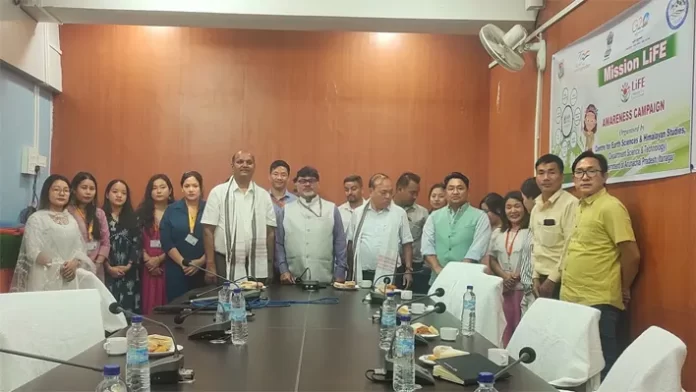ITANAGAR, 27 Oct: The union ministry of earth sciences’ (MoES) National Centre for Seismology (NCS) Director Dr OP Mishra visited Arunachal Pradesh from 24 to 27 October, during which he “held extensive field works with the scientists/engineers, and showed his satisfaction with the joint efforts being made to set up seismic stations in the state,” the Centre for Earth Sciences & Himalayan Studies (CESHS) here informed in a release.
He said that the seismic stations located in Bomdila (W/Kameng) and Daporijo (U/Subansiri) would be inaugurated by Rijiju sometime in November or the first week of December.
Interacting with media persons on Friday, Dr Mishra informed that, “after the installation of seismic stations, seismic tomography will also be carried out to understand the sub-surface fault and other structures to understand the impact of earthquakes in the area.”
The study would be helpful in developing a comprehensive database for creating earthquake resilient structures, he said, and added that “this will also be useful for understanding climate change, sustainable development, and designing earthquake resistant building codes, which will minimise infrastructure damages and save lives and properties.”
“Arunachal Pradesh is still untouched and a virgin land in terms of earth science research,” Dr Mishra said, and informed that “Arunachal will be densified with seismic stations network by setting eight more seismic stations in Seppa (E/Kameng), Mechukha and Monigong (Shi-Yomi), and Anjaw and Longding districts.
Dr Mishra informed that the MoES has initiated steps to establish a comprehensive seismological data receiving and data repository for Northeast India at the Centre for Earth Sciences in Itanagar, “in line with the National Centre for Seismology under the MoES, New Delhi,” for which he inspected the office building here, the release said.
Dr Mishra further said that “union Earth Sciences Minister Kiren Rijiju has provided a positive environment in Arunachal Pradesh to work jointly with the CESHS on the very important issues on earth sciences, such as seismic micro zonation of identified cities of Arunachal, such as Itanagar, Tawang, Aalo, Longding and Anjaw.”
The final outcome of micro zonation of these places would be useful in creating disaster resilient structures and providing precise information about the sub-surface features to estimate the carrying capacity of cities, against the backdrop of fast growth of cities in Arunachal, he added.
“The detailed action plan is being chalked out to work for demonstration of geothermal energy for heating and cooling. The programme is for three years, and it will have scope for developing capacity and training of scientists of the CESHS,” Dr Mishra said.
“There are other important earth science researches which are equally important for the state, like estimation of geo hazards and preparing large-scale maps to demarcate the severity of hazards depending upon the magnitude. This programme will have experts from IITs, universities, and the Centre,” Dr Mishra said.
The NSC director informed that “the MoES has also planned to set up a geotechnical facility in Itanagar, which will be unique and important for this area.”
“It will provide characterisation of various slopes in terms of strength parameters, and overall output will be used for developing infrastructure facilities for the state, like roads, bridges, tunnels, etc,” he said.
Dr Mishra was accompanied by Science & Technology Department Secretary Repo Ronyam, CESHS Director Tana Tage, and scientific adviser Dr Bhoop Singh, the release said.





